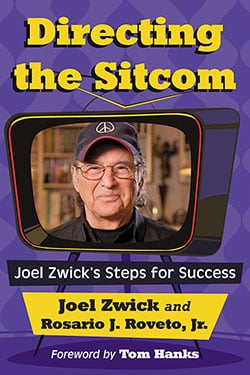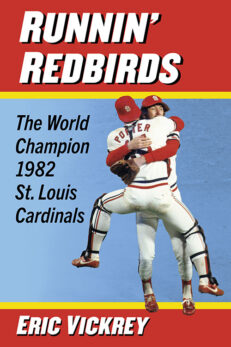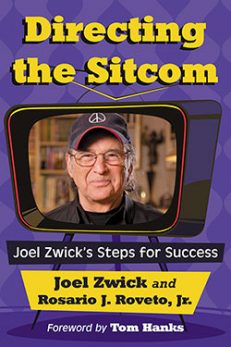Directing the Sitcom
Joel Zwick’s Steps for Success
$25.00
In stock
About the Book
This guided tour of the American situation comedy is given by one of the most prolific directors of the genre. Brooklyn native Joel Zwick began his career in the late 1960s at La MaMa, a New York experimental theater club, before moving to Hollywood to become a successful director during the sitcom’s golden age.
He describes the 10 steps of sitcom production and outlines the five-day process, from the early “table read” to the final shoot in front of a live audience. Behind-the-scenes anecdotes include personal and professional experiences with actors Tom Hanks, Penny Marshall, Robin Williams, Jamie Foxx, the cast of Full House and many more.
About the Author(s)
Bibliographic Details
Joel Zwick and Rosario J. Roveto, Jr.
Format: softcover (7 x 10)
Pages: 184
Bibliographic Info: 40 photos, glossary, index
Copyright Date: 2016
pISBN: 978-1-4766-6556-6
eISBN: 978-1-4766-2517-1
Imprint: McFarland
Table of Contents
Table of Contents
Foreword by Tom Hanks 1
Introduction by Rosario J. Roveto, Jr. 3
Joel’s Approach to the Sitcom 9
Step 1: Preparation
Day 1: Meetings and Rehearsal 28
Production Meeting: Prep and Execution 28
Mechanics of the Production Meeting and Making Decisions 29
Special Equipment 34
Visualization of the Set 35
The Table Read 36
The Pilot: How You Can Help Shape a Show 38
The Table Read for Your First Time Directing a Show 41
Putting It on Its Feet 42
Rehearsal Advice for the First-Timer on a Show 42
Rehearsing Joel’s Style and Actor Resistance 43
Step 2: Staging
Day 2: Building a Solid Foundation 47
Staging: Set Notes for Camera and First-Time Advice 47
Staging: Applying the Learned Scene 50
Staging: The Physical Manifestation of the Story 53
Disciplining the Physical Excesses of an Actor 58
Step 3: Dialogue
Day 2: Engaging the Actors 60
The Importance of Dialogue 60
Pacing and Cues and Acting Styles 62
Rules of Comedy and Directing Actors 64
But I Didn’t Study Acting … 67
Sense of Humor 68
Step 4: Fine Tuning the Acting
Day 2: The Tools of the Craft 69
Time Management 69
The Importance of Props 70
Lines, Movement and Placement 72
Step 5: Writers’ and Producers’ Run-Through
Day 2: Final Preparation 75
Writer-Producer Run-Through 75
Making Animals and Actors Work 78
Step 6: Applying Producer Notes
Day 3: How to Improve the Play 82
Preparing for the Network Run-Through 82
Step 7: Network Run-Through
Day 3: Performing for the Network 87
Importance of the Network Run-Through 87
Step 8: Shooting the Show
Day 4: Preparing for the Shoot 90
The Shooting Draft and the Technical Crew 90
Definition of Framing and Composition 91
Camera Shots and Coverage 98
The Proscenium and Its Multiples 104
The Importance of Resets 106
The Short Wall 111
Pass Coverage 113
Conceptualizing the Story with Four Cameras 115
Commercial Breaks 119
Traditional Camera Blocking with Stand-Ins 120
Specialty Shots: Do You or Don’t You Reinvent the Show? 121
Is Shooting Comedy Formulaic? 123
Step 9: Adjusting the Shoot
Day 4: Accomodating the Network and Producers 128
Network Notes and the Changing Industry 128
Step 10: Final Shoot
Day 5: Performing for a Live Audience 133
Show Time 133
The Booth vs. the Floor 139
The Director’s Cut 145
Conclusion
Making Comedy Fun: The Life of a Sitcom Director 149
Separating Your Style from the System 156
Glossary 159
Index 169





